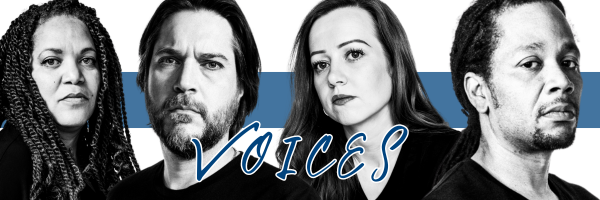
If you’ve been on TikTok lately, you may have noticed something unexpected sliding into your feed between skincare hacks and ADHD self-diagnoses: foreskin restoration.
Yep. It’s a thing.
More and more men are posting about how they’re stretching their skin, tracking “resto progress,” and reclaiming a piece of themselves they didn’t even know they were missing. The tone is often light—sarcastic, meme-heavy, occasionally NSFW—but beneath the humor, there’s something deeper happening:
Men are finally talking about circumcision.
For a topic long buried under locker room silence, religious dogma, and “just what we do here” cultural apathy, that’s revolutionary.
But here’s the catch: for every viral video showing a tugging device or celebrating “Foreskin Friday,” there’s something missing from the conversation—something raw, real, and rarely said out loud.
So let’s talk about it.
Let’s go deeper than TikTok’s 60-second snippets and take a brutally honest look at why this movement exists in the first place, what foreskin restoration really is, and why it’s not just about sex—it’s about identity, consent, and healing.
First, What Is Foreskin Restoration?
Foreskin restoration is the process of expanding the remaining penile skin (typically through stretching techniques or devices) to create a new sleeve of skin that resembles the original foreskin in both function and appearance.
No, you’re not regrowing the nerves.
The nerve endings that were cut during circumcision—tens of thousands of them—are gone.
They don’t regenerate.
But that doesn’t mean restoration is pointless. For many men, it increases comfort, reduces friction, enhances sexual pleasure, and most importantly, restores a sense of bodily integrity.
So Why Is This Suddenly Trending?
Short answer? TikTok is the new confessional booth.
It’s where men are airing out shame, cracking jokes about their “cut status,” and comparing foreskin to eyelids, fingerless gloves, and burrito wrappers. (The metaphors are endless.)
There’s a cultural shift happening—especially among millennials and Gen Z. We’ve grown up questioning everything: gender roles, religious norms, medical authority. Circumcision was bound to face the same scrutiny.
And once you realize that the majority of the world doesn’t routinely circumcise boys, and that the U.S. is a global outlier, you start to ask: Why the hell did this happen to me?
That question is the quiet fuel behind most restoration videos. But here’s what those clips don’t always tell you:
1. Circumcision Isn’t “Just a Snip”
We’ve been sold a lie. A dangerous one. The idea that circumcision is a harmless, minor, cosmetic tweak—like getting your ears pierced. It’s not.
It’s the surgical removal of 30-50% of the skin on the penis. Not just any skin, but the most sensitive, nerve-dense tissue on the male body. The part is designed for protection, lubrication, sensation, and yes, pleasure.
That’s not a “snip.” That’s amputation. And it’s done on infants who can’t consent.
2. Most Men Don’t Even Know What They Lost
If you’re circumcised, odds are no one ever explained to you what the foreskin was before it was taken. Most doctors can’t tell you the full function of the foreskin without looking it up.
And when you start to realize what was removed—how it protected the glans, provided gliding motion during sex, and housed specialized nerve endings—you’re dealing with curiosity and grief.
And no one warns you about that part. TikTok might show you the physical transformation, but not the emotional reckoning that often comes with it.
3. Restoration Is About More Than Pleasure
Yes, a lot of guys start restoring because they want better sex. Fair.
But talk to restorers long enough and you’ll hear something deeper:
“I just wanted to feel whole again.”
“I felt violated when I learned what happened to me.”
“This isn’t about shame. It’s about reclaiming my body.”
This isn’t some fringe kink. It’s a movement grounded in bodily autonomy, something we loudly defend for women but quietly dismiss for men.
Restoration is a protest. A healing act. A way of saying, my body, my choice—even if I’m choosing it 30 years too late.
4. The Medical Establishment Still Isn’t Talking About It
Here’s the part that gets swept under the rug:
The U.S. medical system continues to normalize routine infant circumcision despite mountains of global medical opposition.
Most countries? Circumcision is rare outside of specific religious or cultural groups.
The World Health Organization? Doesn’t recommend it for infants.
European medical boards? Actively warn against it.
American hospitals? Still doing it. Often without full disclosure. Often without even local anesthesia.
TikTok can’t fix that. But it can start the conversation. And it is.
5. You’re Allowed to Be Angry. Or Not.
If you’re circumcised and reading this, you might be feeling a lot: confusion, anger, guilt, shame, relief, curiosity, or a weird mix of all the above.
That’s normal.
You don’t have to restore. You don’t have to become an intactivist. You don’t have to post anything online.
But you are allowed to feel what you feel. And to ask questions that should’ve been answered decades ago.
What happened to you wasn’t your fault.
But what you do now? That’s up to you.
Final Thought: It’s Bigger Than Foreskin
This is about truth. About owning our stories. About undoing generational trauma disguised as tradition.
Whether you decide to restore or not, learn this:
You were born whole. You weren’t broken.
And the fact that you’re even reading this?
Means you’re part of a new kind of rebellion. One where men speak up. Ask hard questions. Heal out loud.
So keep watching those TikToks. Laugh. Learn. Scroll. But don’t stop there. Because the real restoration? It starts inside.
Share this with a friend. Not to convert. Just to open a door.
Because sometimes, all it takes is one honest conversation to change everything.






No Comments